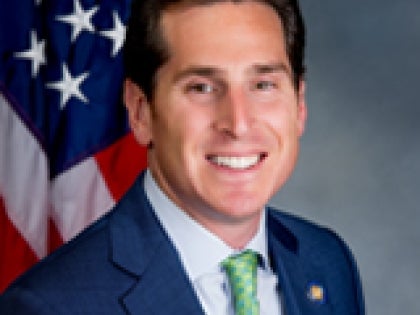
Kaminsky: Irma, Harvey and Sandy: We need a Marshall Plan for future disasters like these
When superstorm Sandy struck my home state of New York in 2012, it dealt a severe blow to communities that were unprepared for a major flooding event — even though many of them were literally right on the water.
People died, property was destroyed and lives were ruined because residents and local governments failed to appreciate the risk.
Now the same story is unfolding in Texas and Florida.
The tragic truth is that we know all too well that cities and towns on the coast and near major waterways are vulnerable to storms. We also know what we have to do to protect them from flood damage. Yet the work has not been done.
Beaumont, Texas, for instance, had no drinking water for several days after Harvey when its water treatment plant was flooded by the Neches River. Irma just finished its lashing of Florida, and it is highly likely that significant, preventable damage will be left in its wake: In 2013, the American Society of Civil Engineers gave the state a “C” for its infrastructure, which is mostly at the end of its usable life.
These are just the latest reminders that we need to take the threat of big storms more seriously. When the waters finally recede, this year’s hurricanes will have cost us hundreds of billions of dollars, the futures of countless families, and the lives of our fellow Americans. This country needs a Marshall Plan to prepare for the inevitable storms to come, and it needs one now.
The residents of vulnerable communities are lulled into a false sense of security after generations without a severe weather event. (My grandmother, for instance, ended up with four feet of water in her basement on Long Island during Sandy — and that was the first time her house flooded in 60 years on the coast.) Because of this, they do not press their elected officials to better prepare.
The result is that these cities and towns make little to no effort to storm-harden their infrastructure, raise homes and construct physical barriers in anticipation of flooding. In fact, some localities even reject federal dollars for storm resiliency measures for parochial reasons.
My hometown of Long Beach, for example, rejected an Army Corps of Engineers project to erect a sand dune on the city’s beach for short-sighted reasons. After the Atlantic deluged the city during Sandy, residents quickly changed their mind, and the dune is now scheduled to be built next summer.
So it is up to our elected officials to lead. Sandy taught us that lesson and others. But here is the most important one: An ounce of prevention is worth a pound of cure.
Take, for instance, the Brooklyn Battery Tunnel (connecting Brooklyn with downtown Manhattan). The tunnel took in many millions of gallons of water during Sandy, debilitating an essential piece of infrastructure, and strangling commerce. All because a sealing door had not been installed.
Now there’s a door on the tunnel, paid for by the federal government, and its cost was a fraction of the damage Sandy did without it.
In Sandy’s wake, Washington stepped in with dollars for myriad other anti-flooding measures in New York that can serve as a model for the rest of the country. On Long Island, federal money is being used to elevate roads, restore wetlands (which hold back water), raise residential homes, and lift and harden power stations and other critical infrastructure.
After it was flooded during Sandy, we spent $37 million to construct an 18-foot concrete wall around our local sewage treatment plant — something Beaumont wishes they had done before Harvey.
Our state is now spending $4.5 billion on storm readiness. But the federal government somehow still has not learned its lesson. Though it spent billions on New York over the past five years, the president’s current budget plan would actually cut funding to the Federal Emergency Management Agency (FEMA).
And much talk about a major national infrastructure spending package that would greatly help our resiliency has gone nowhere.
Our federal government should not only wise up and spend smarter, it should also go further, and conduct a nationwide assessment of flooding risks to determine the most at-risk communities. Then, it should launch a major infrastructure initiative that creates good jobs for a pressing purpose.
Here on Long Island, we’ll be much better prepared the next time Mother Nature takes aim at our coast. But many other areas are not.
All at-risk communities should be scrambling to take the same steps with the federal government’s help. The risk is real and the jobs created will be as well. As my grandmother used to say: making mistakes is forgivable; repeating them is not.